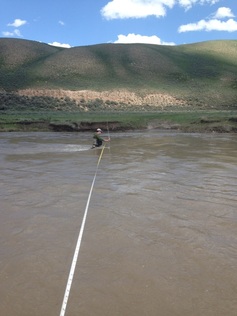Hydrology
Watershed analysis and planning
Hydrologic investigation
Hydraulic modeling
Groundwater monitoring
Flow management
Stream flow gauging

Biota offers cost-effective strategies, services, and solutions for complex water resource challenges. This is accomplished through integration of staff expertise in hydrology, hydraulics, fluvial geomorphology, soil science, aquatic biology, and ecology. Our goal is to promote healthy and productive watersheds at multiple scales while meeting the needs of our clients.
Watershed hydrologic investigations projects generally begin with analysis of available historic data, followed by implementation of empirical or analytical efforts to collect supplemental data.
Watershed hydrologic investigations projects generally begin with analysis of available historic data, followed by implementation of empirical or analytical efforts to collect supplemental data.

Biota currently utilizes approximately 80 computerized stage recording devices, digital conductance flow meters, and established US Geological Survey (USGS) protocols to maintain and operate stream flow gauge stations throughout western Wyoming and eastern Idaho. We have developed specialized gauging hardware configurations and deployment techniques in order to ensure the collection of accurate and pertinent hydrologic data in diverse riverine systems.
Biota has considerable experience and knowledge associated with conducting hydrologic investigations in many contexts, including generating accurate stage data and flow records; calculating mean monthly and mean annual discharge; establishing flow duration curves; researching water rights; assessing return flows and conveyance losses; understanding water storage and use efficiency; diversion management; and modeling hydrologic conditions through correlation or regional regression techniques.
Biota has considerable experience and knowledge associated with conducting hydrologic investigations in many contexts, including generating accurate stage data and flow records; calculating mean monthly and mean annual discharge; establishing flow duration curves; researching water rights; assessing return flows and conveyance losses; understanding water storage and use efficiency; diversion management; and modeling hydrologic conditions through correlation or regional regression techniques.

